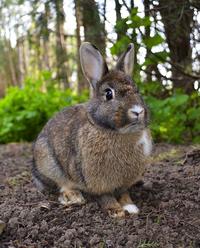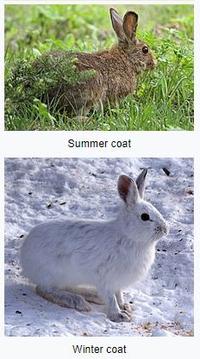Working with a multidisciplinary international team of researchers who specialise in ecology and genetics, Joel has helped to pinpoint the origins of the fastest colonisation rate for an introduced mammal ever recorded.

Photo from Wikipedia
The European rabbit, Oryctolagus cuniculus, was originally introduced to mainland Australia in 1788 but despite nearly 100 more importations, the rabbit population only exploded in the latter half of the 19th century. In 1859 Thomas Austin, in trying to recreate an ‘English Landscape’ on his estate in Victoria, received a consignment of 24 wild and domestic rabbits from his brother in Somerset. Within three very productive years, the rabbits multiplied their numbers into the thousands. Within 50 years rabbits had spread across the entire continent at an astonishingly rate of 100km per year. This was a very successful rabbit invasion!
The researchers on this project traced DNA found in the mitochondria of cells – which is inherited from the mother – in present day Australian rabbits and discovered the genetic similarities to rabbits in south-west of England. They also discovered that some rare genetic variants in the Australian rabbits increased with distance from Thomas Austin’s estate.
So why were these Somerset rabbits so successful? This is most likely because of their wild ancestry which gave them a devastating advantage over previously introduced rabbits with domestic origins which had been bred to emphasize traits including tameness and distinct coat colours.
Of course, this invasion wreaked havoc on the indigenous Australian ecology and continues to damage agricultural crops to the cost of $200m each year.






